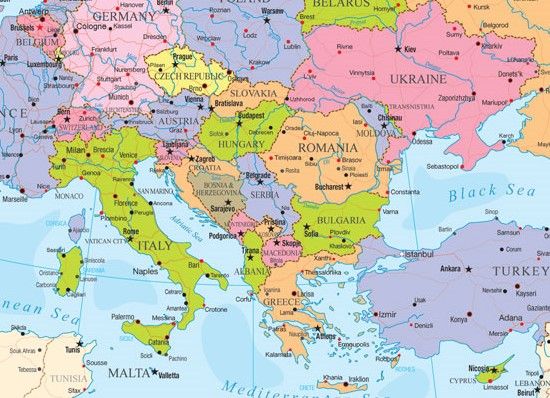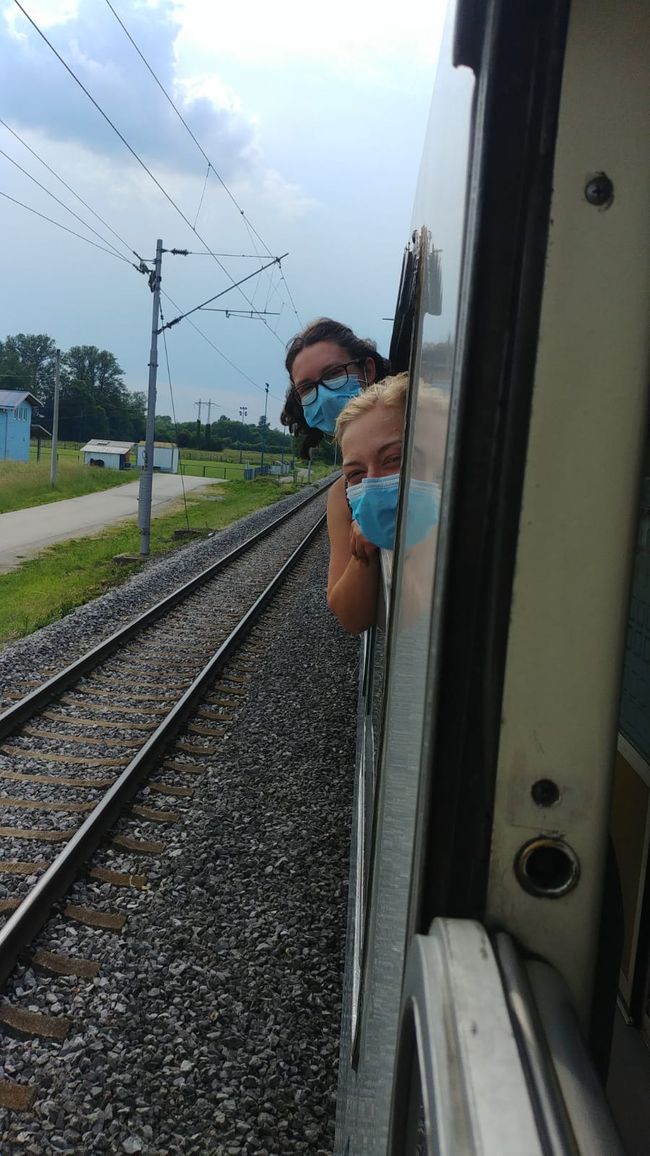อิสตันบูล - สูดอากาศตะวันออกเล็กน้อย (ป้ายที่ 14)
ที่ตีพิมพ์: 10.07.2021
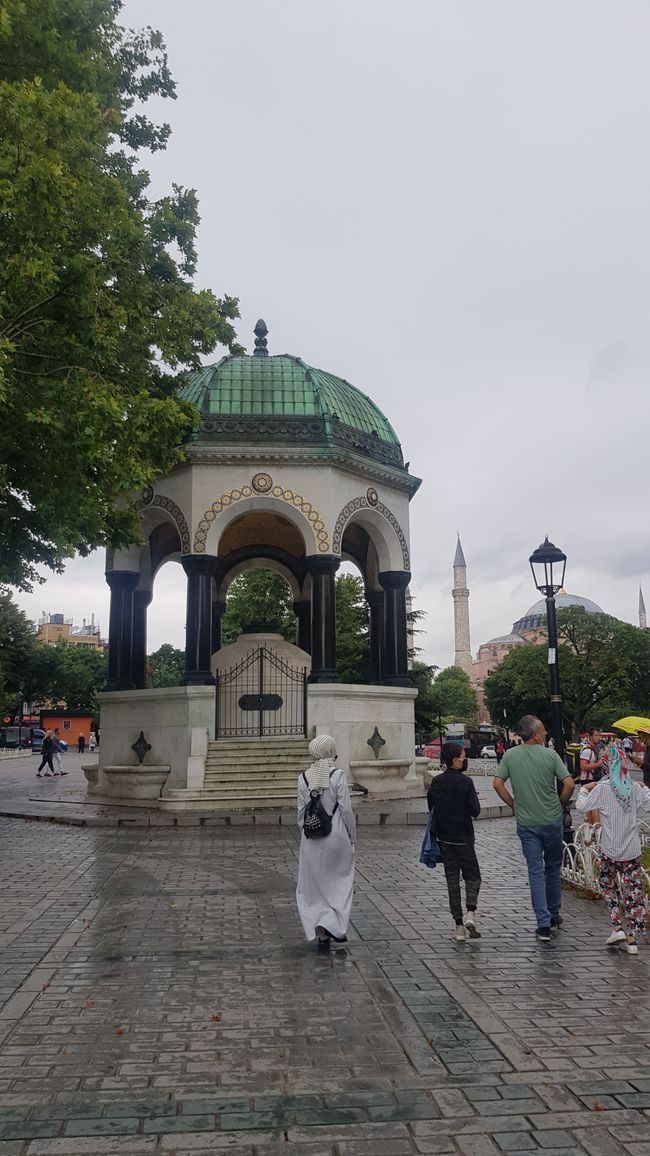
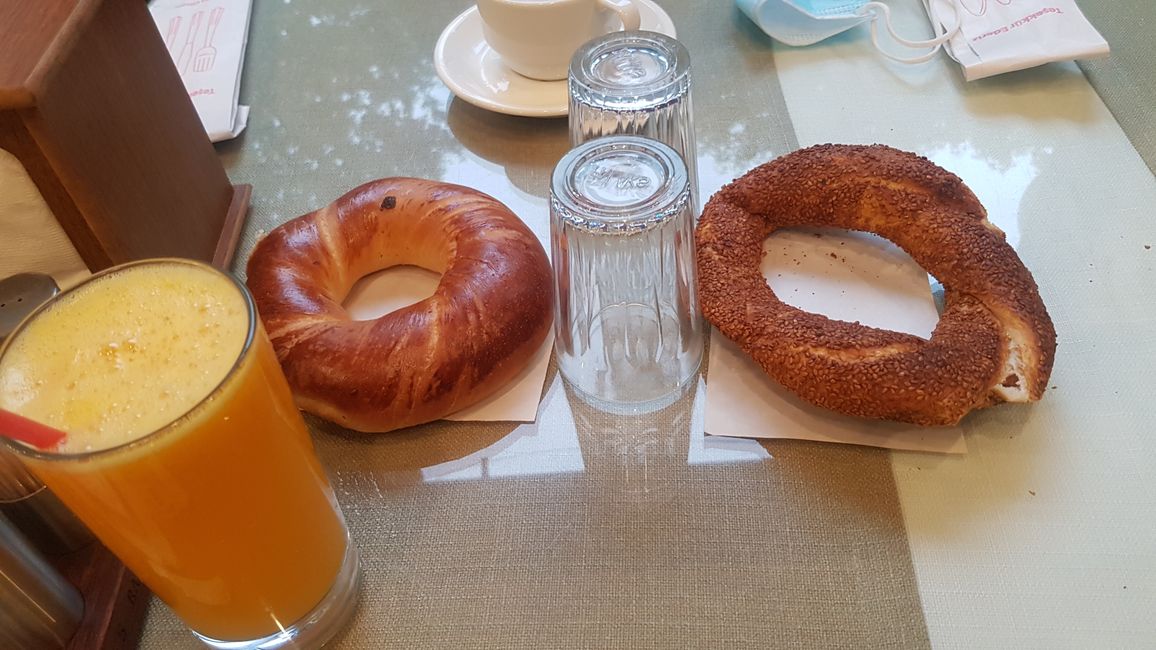
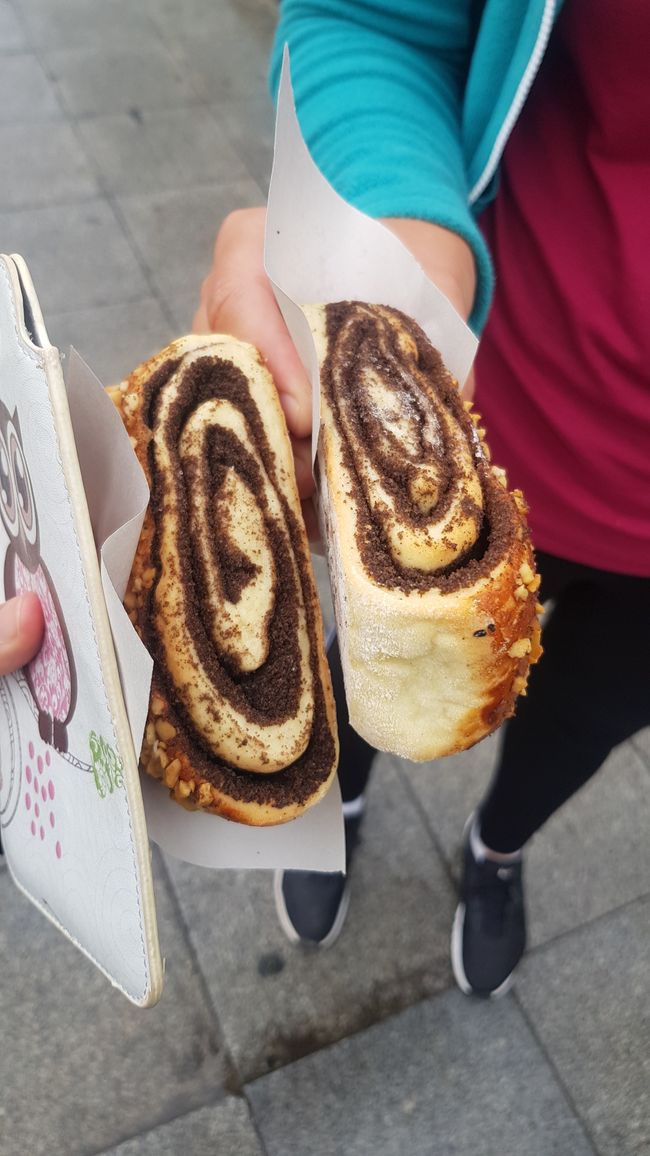
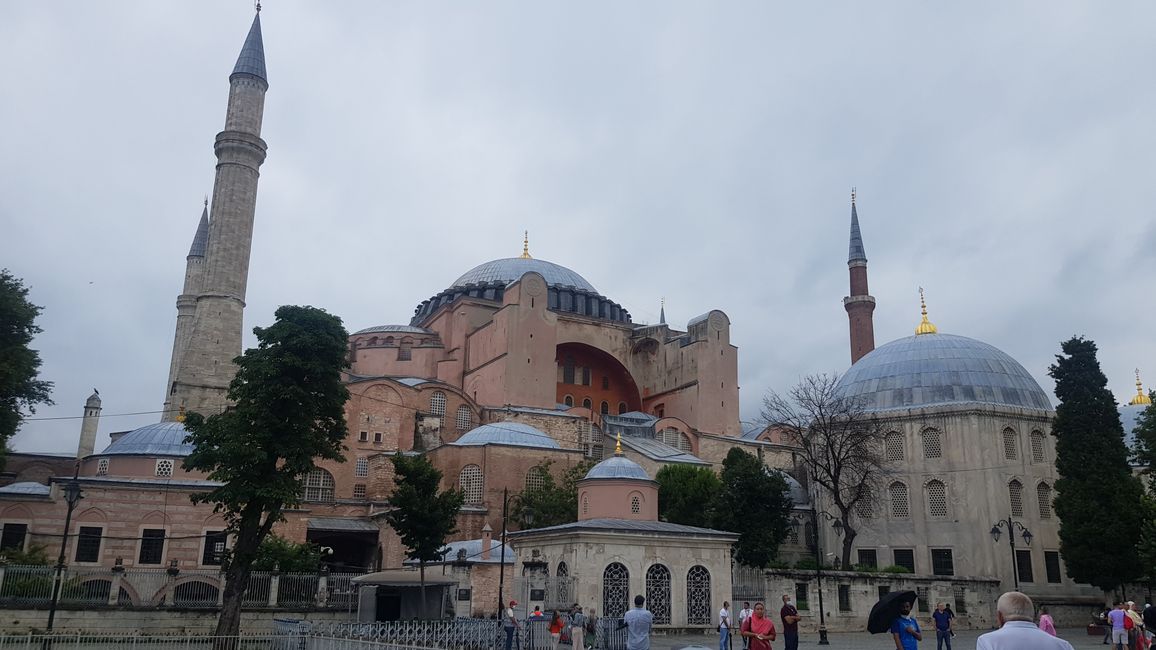
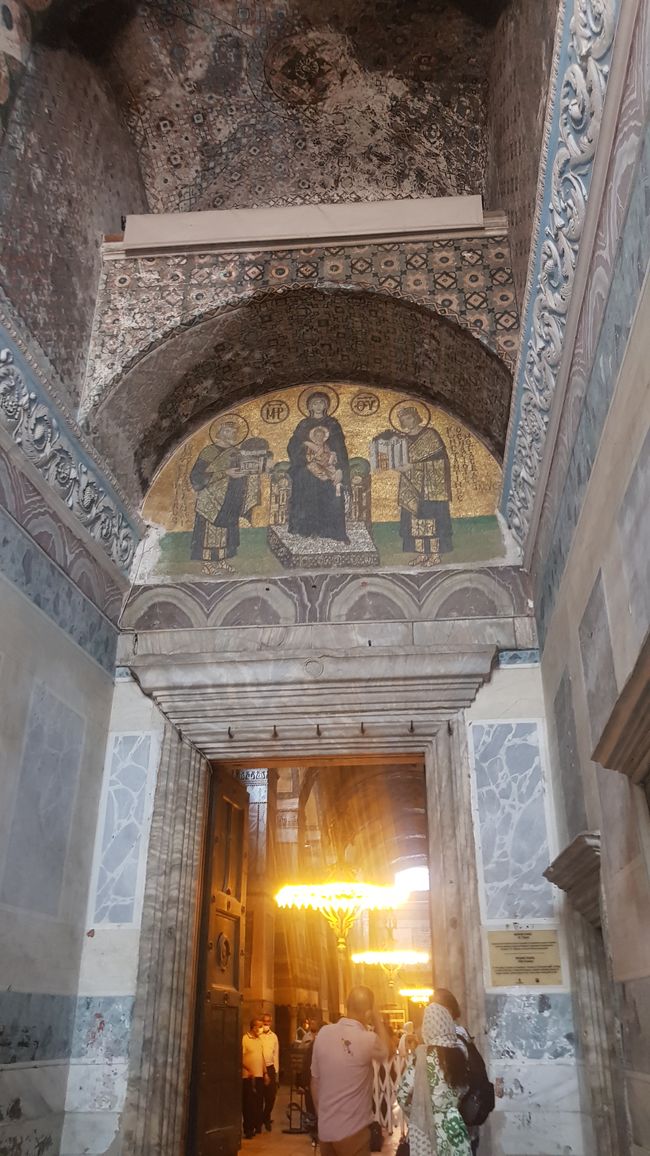
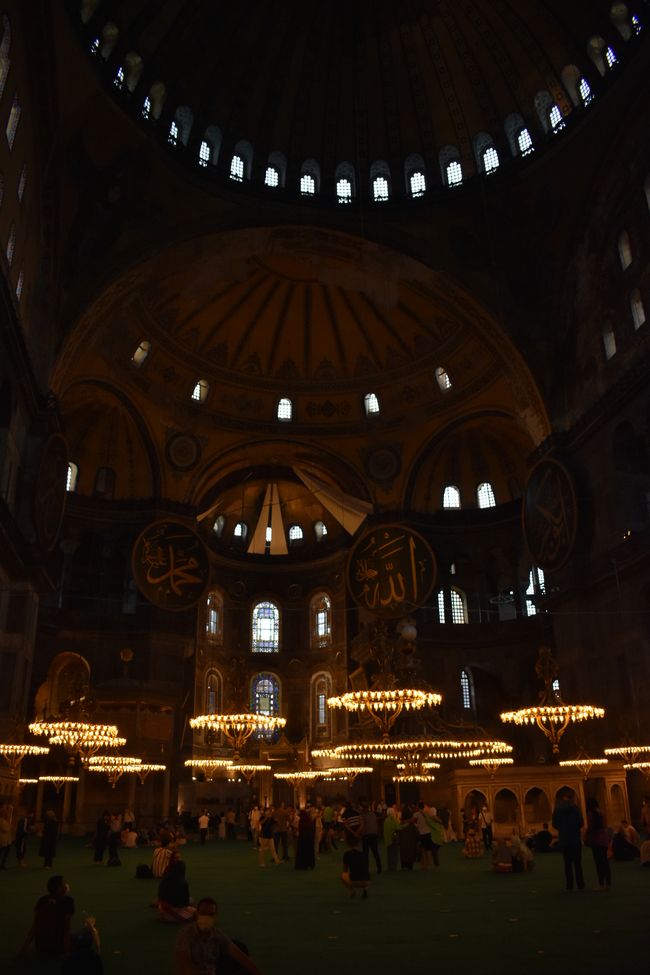
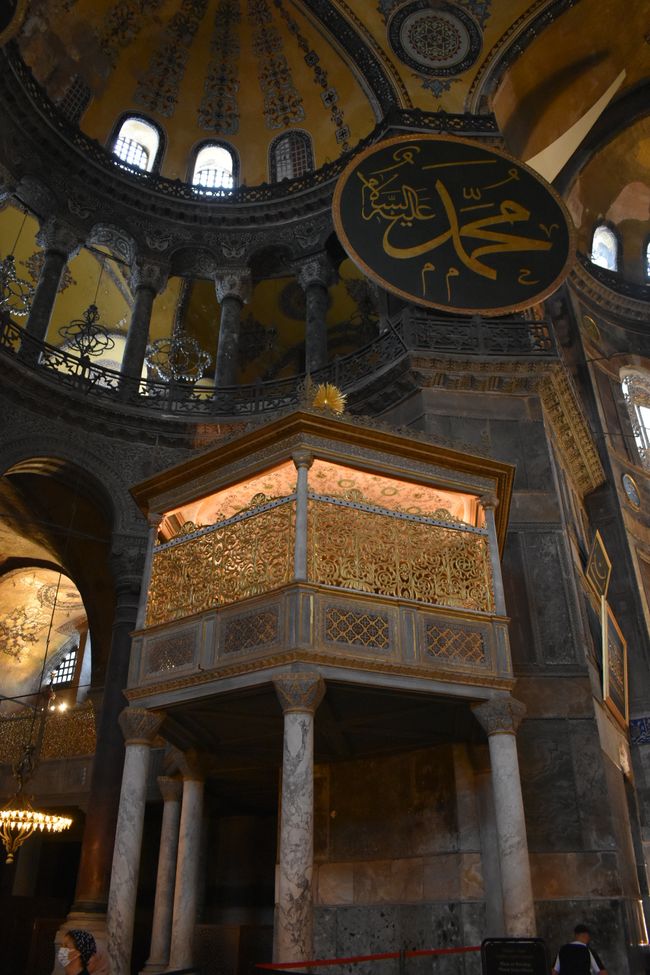
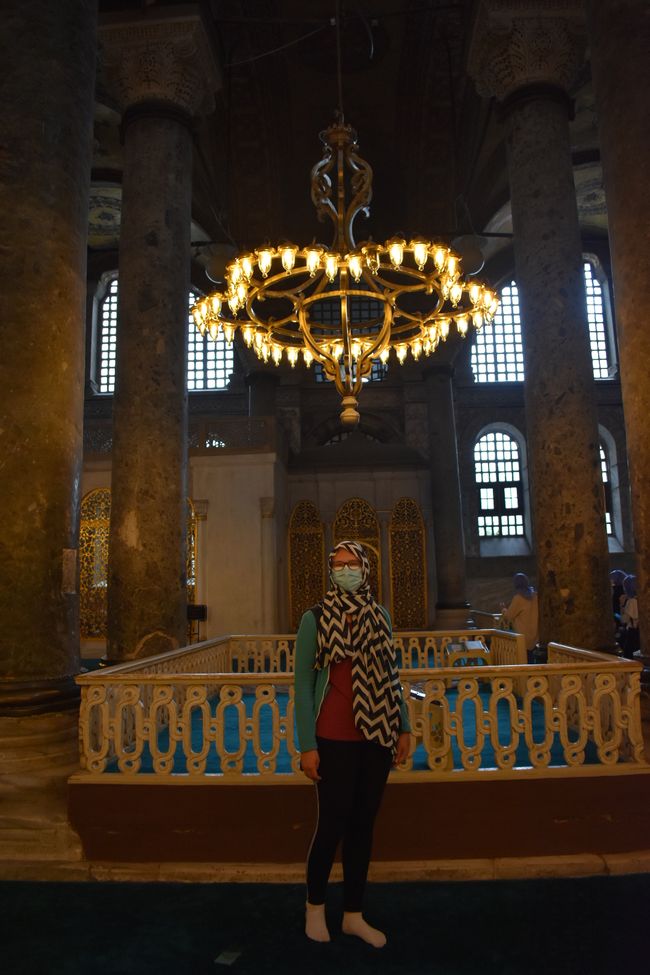
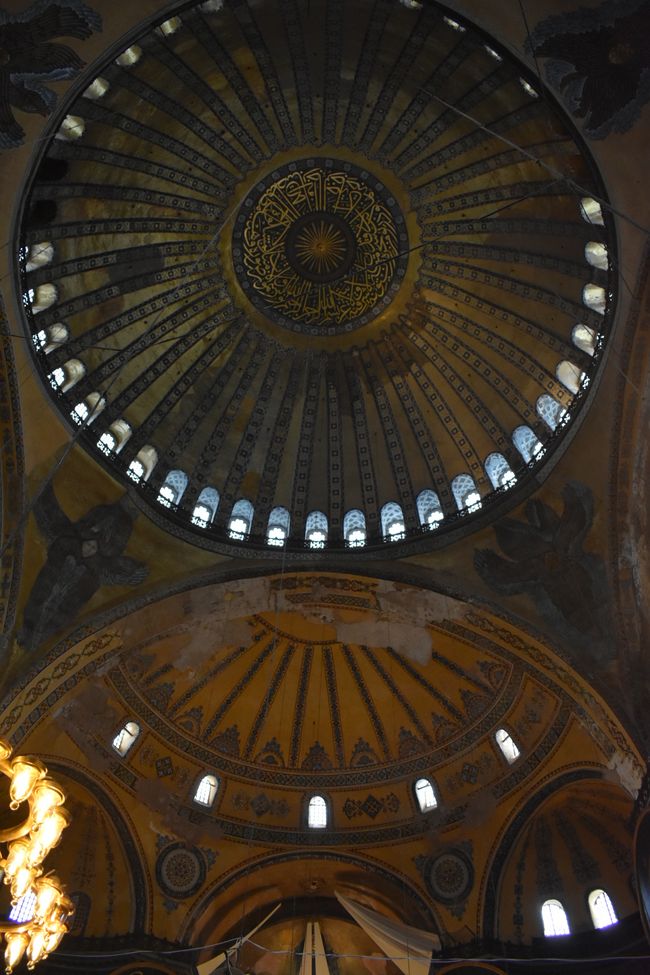
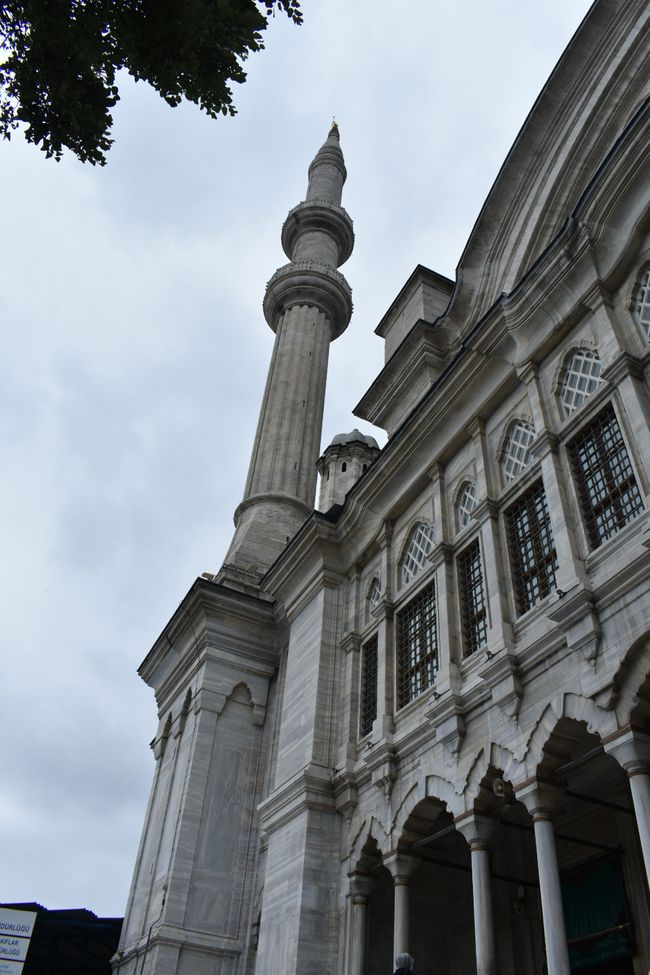
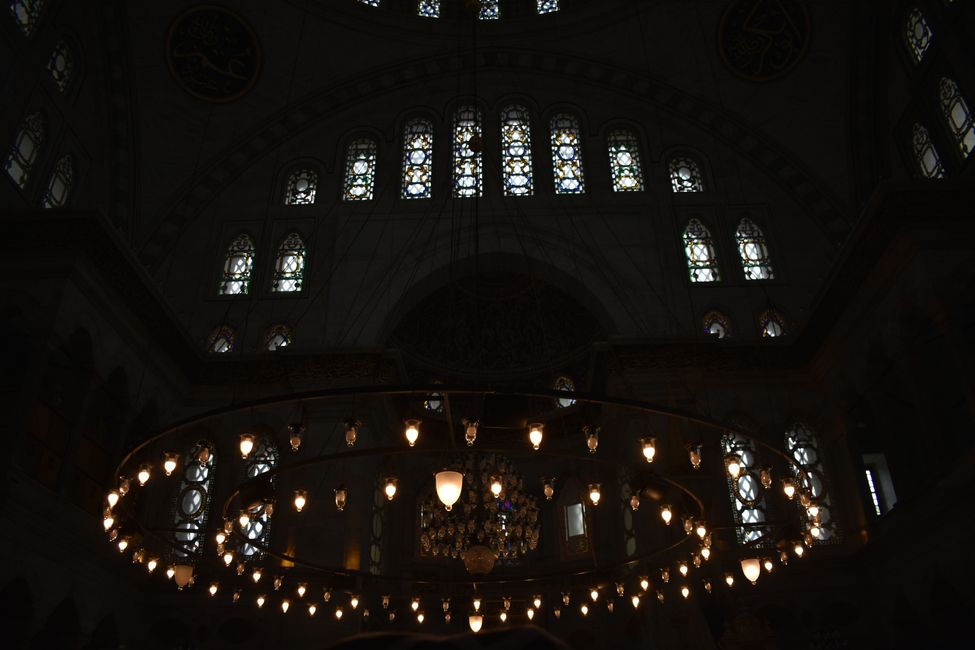
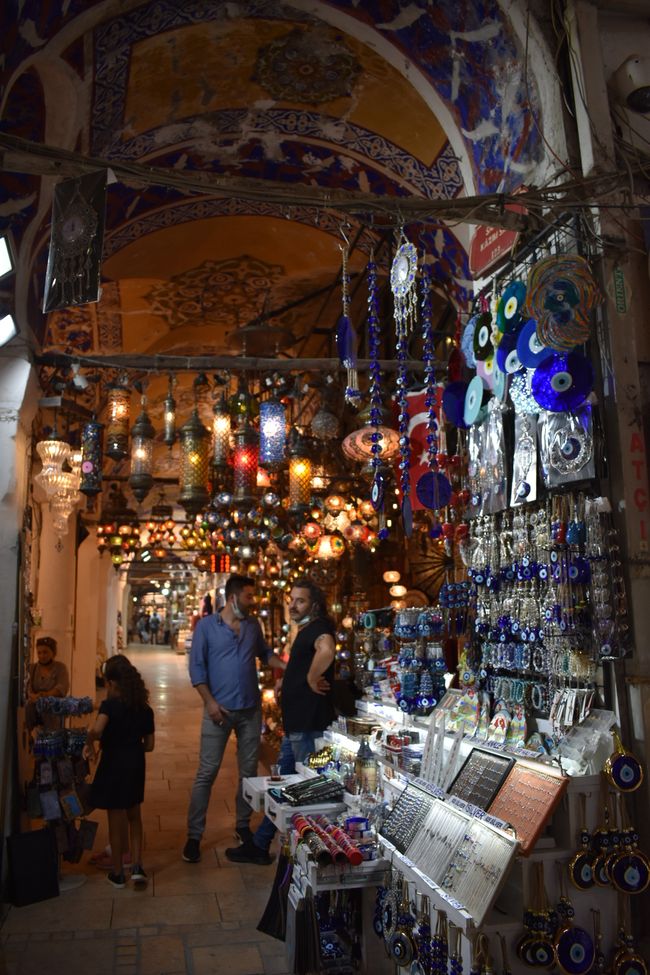
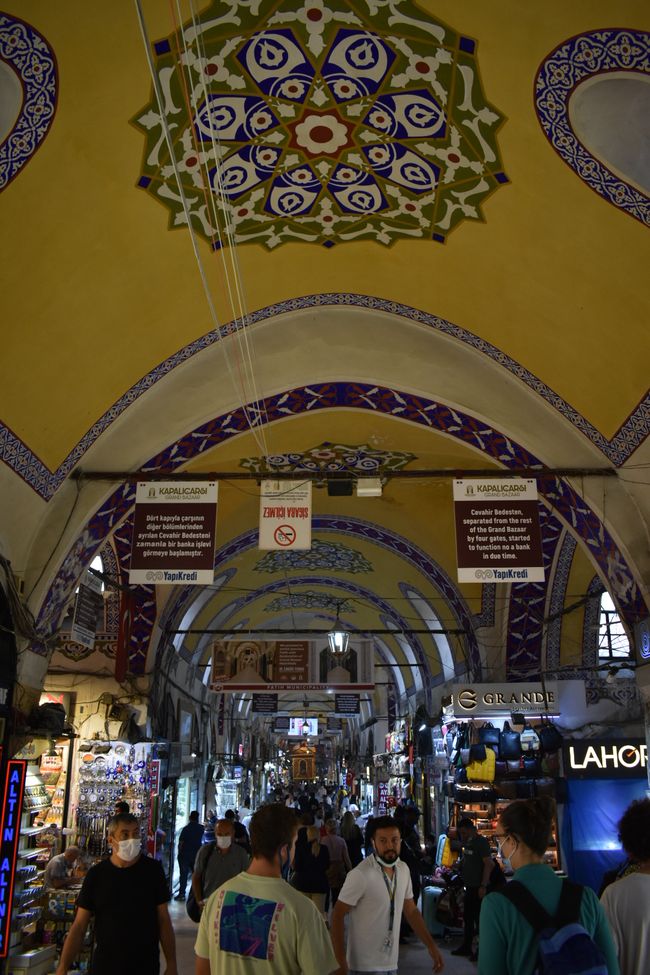
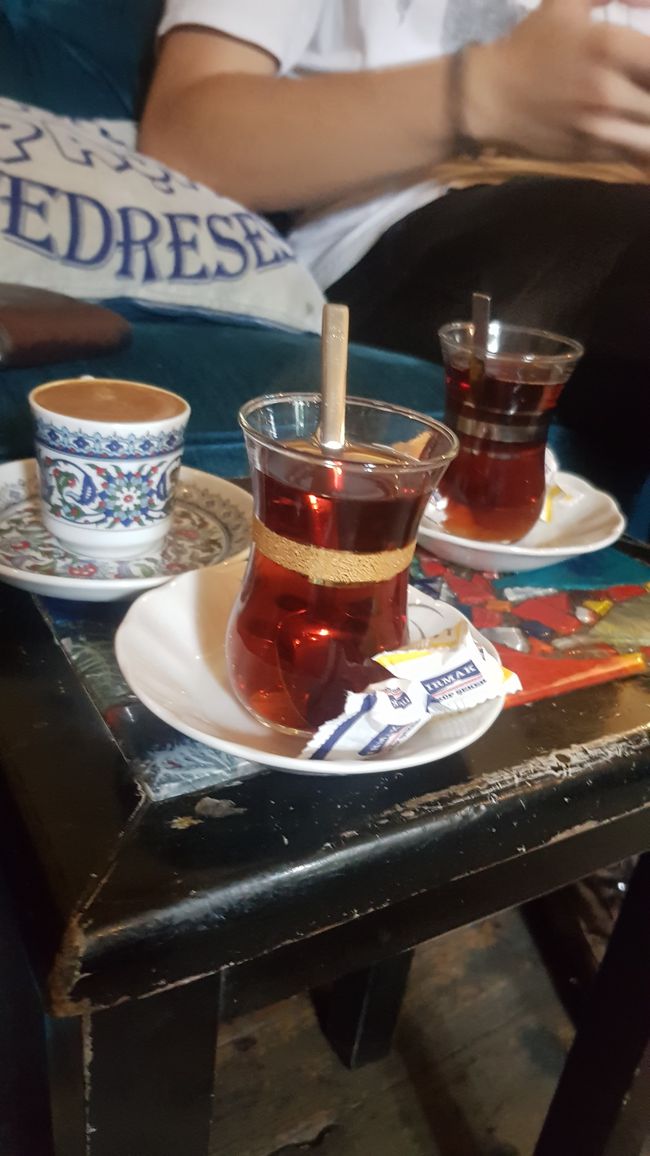
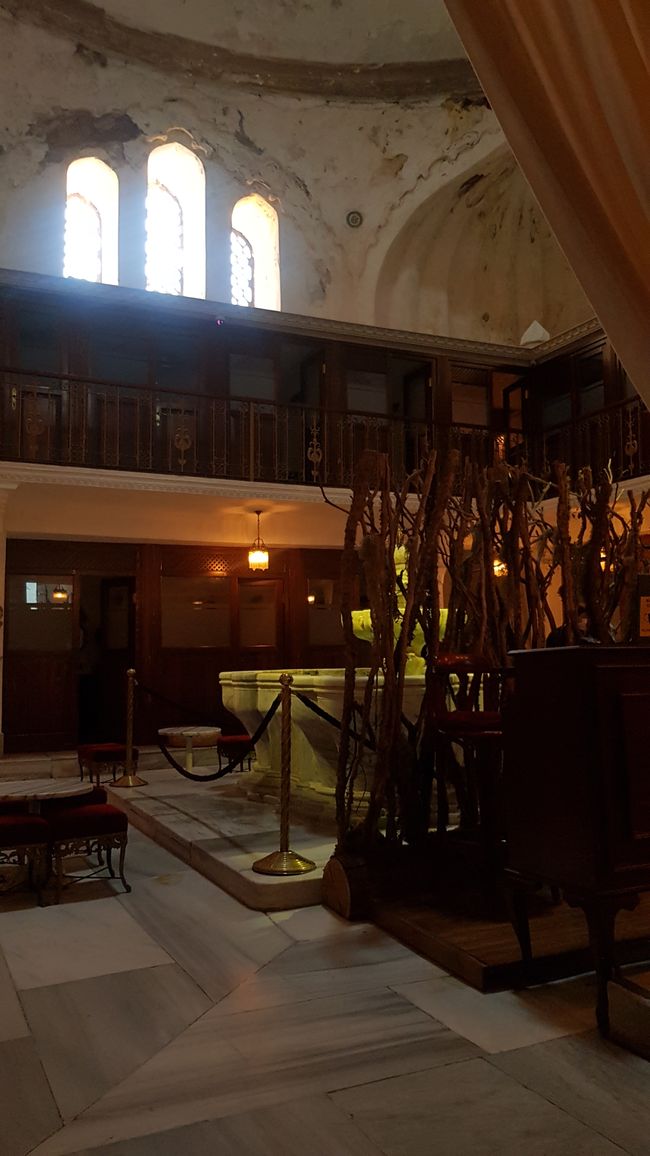
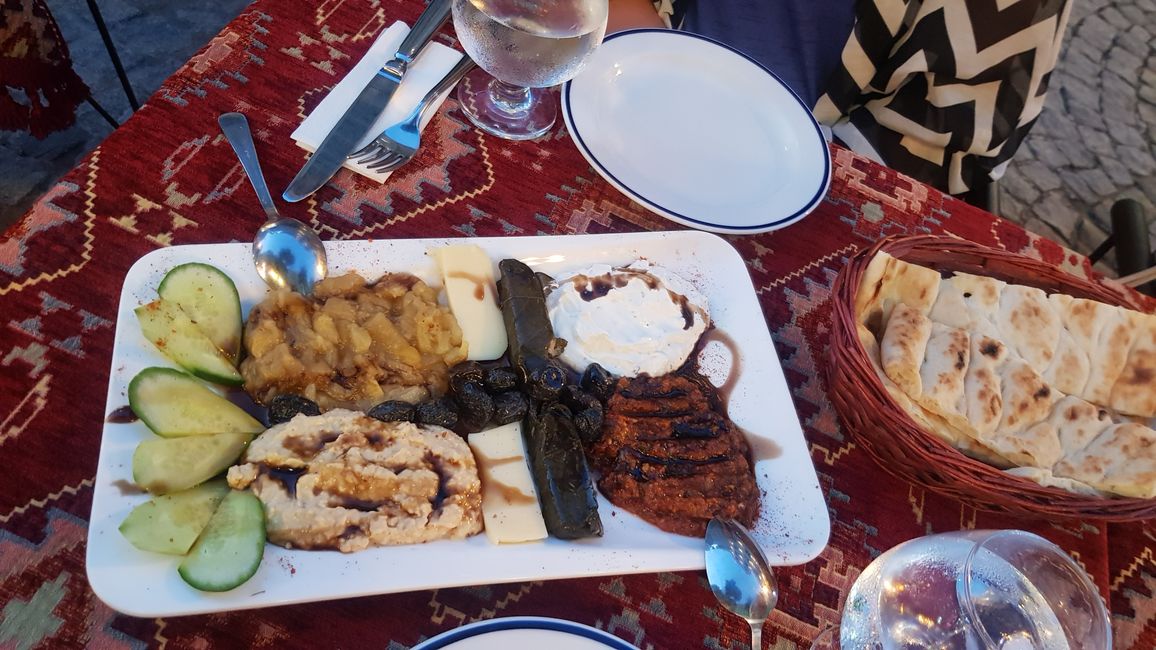
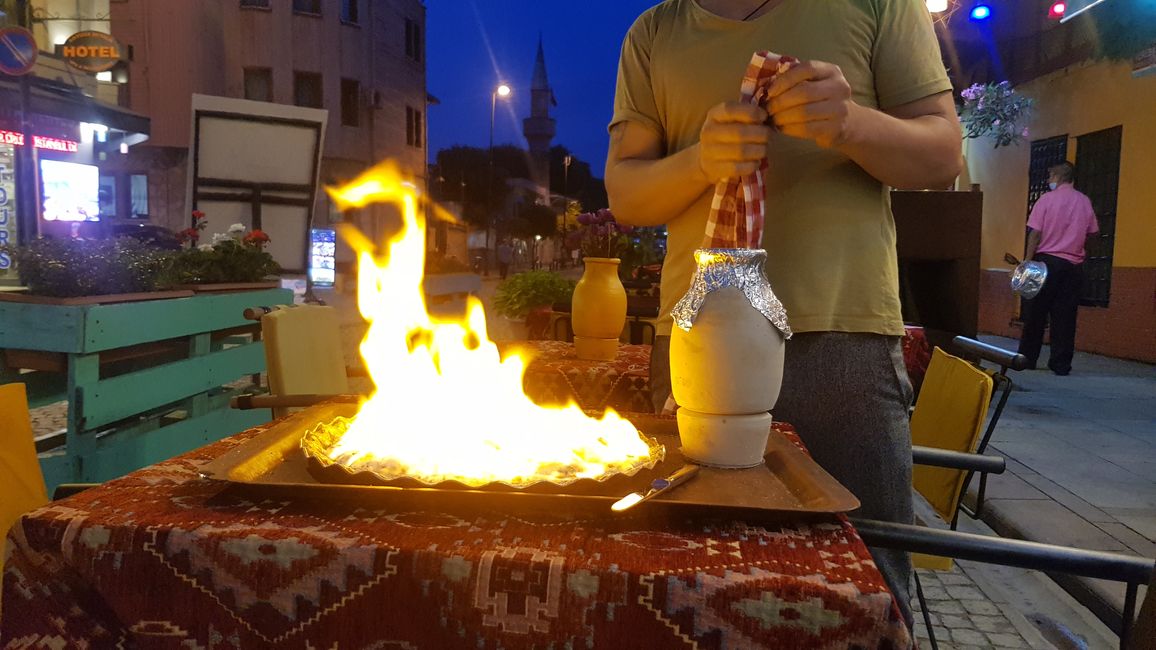
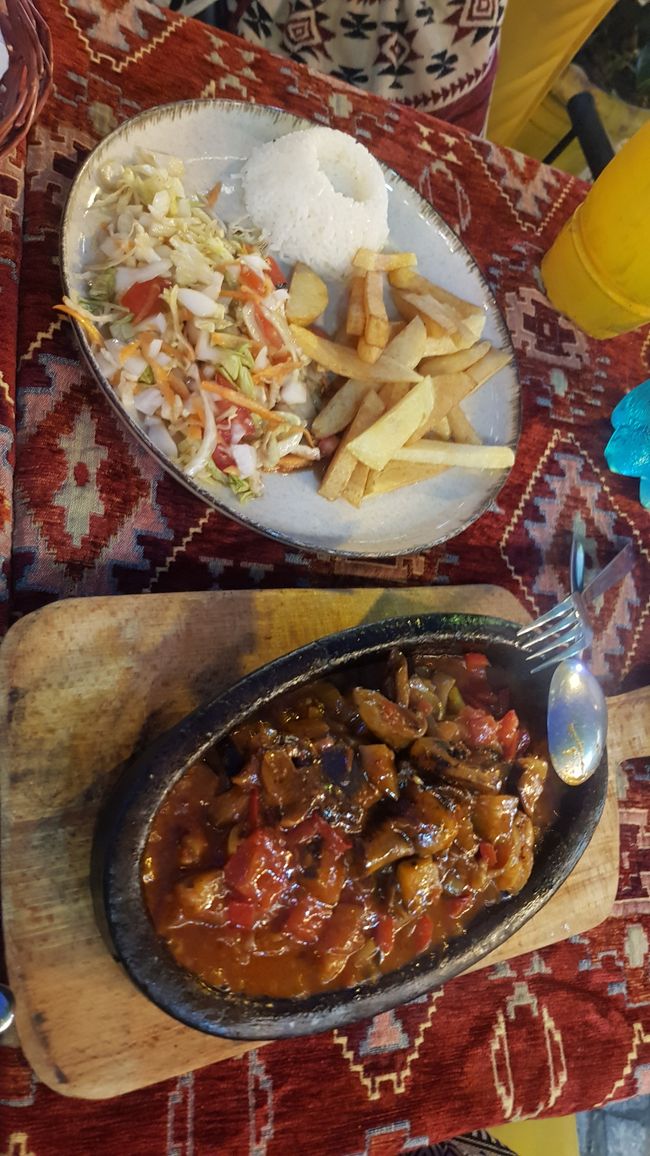
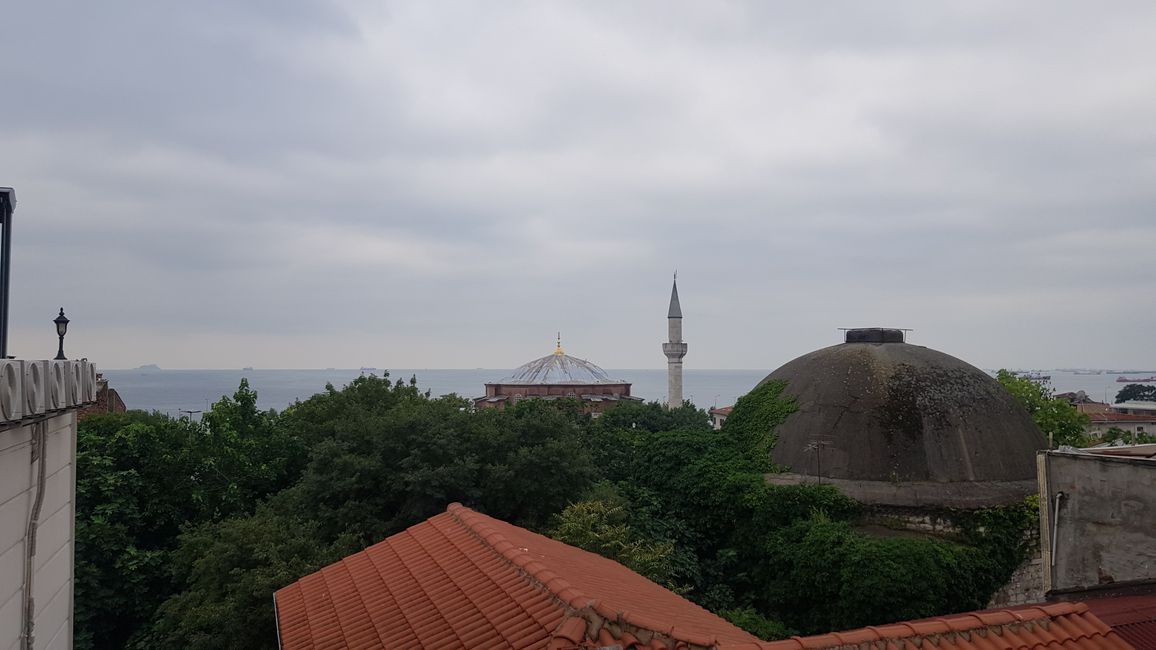
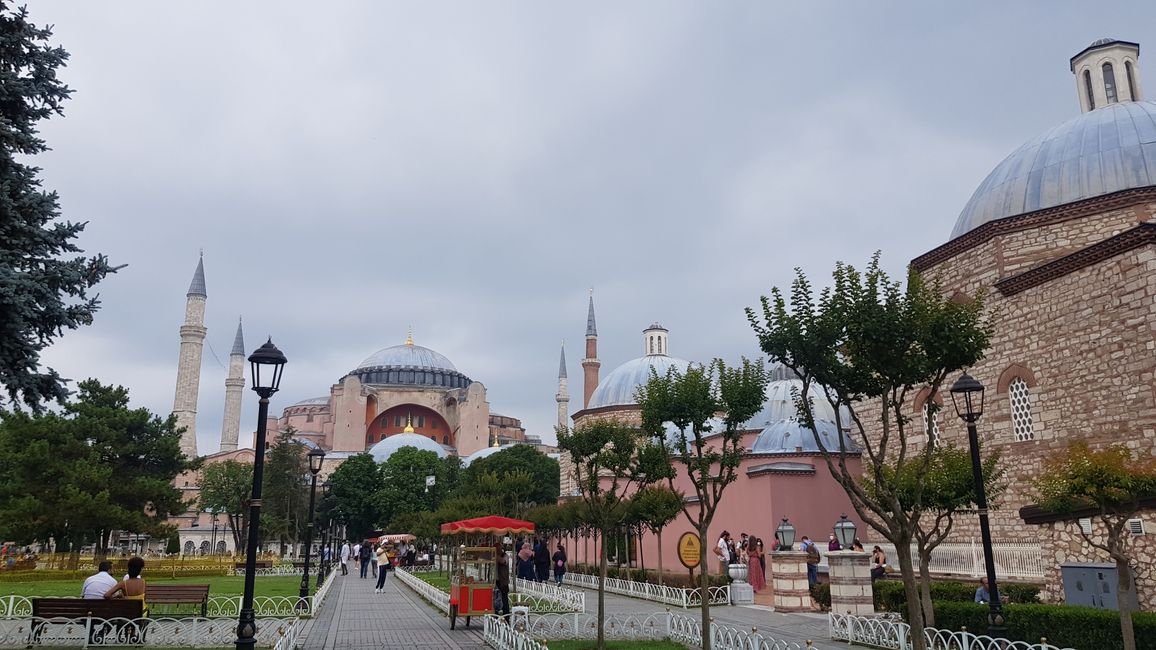
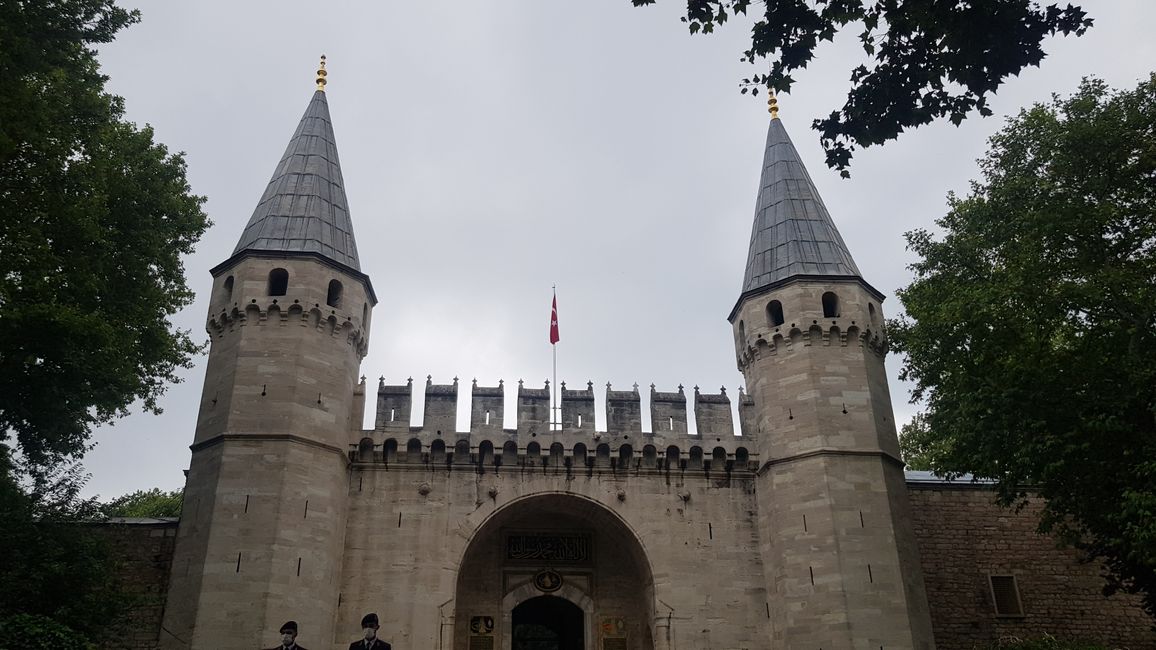
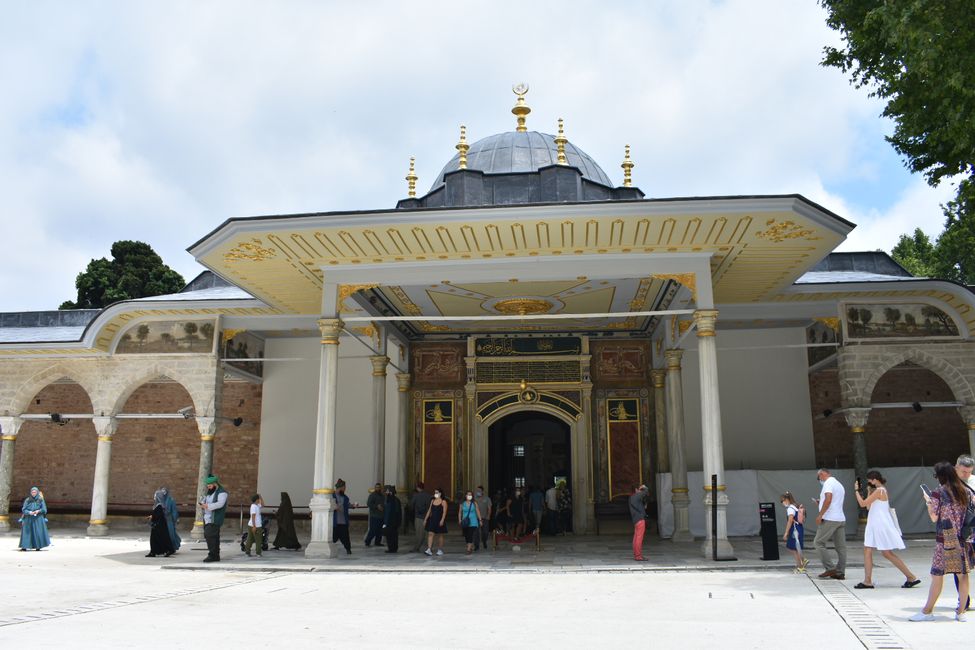
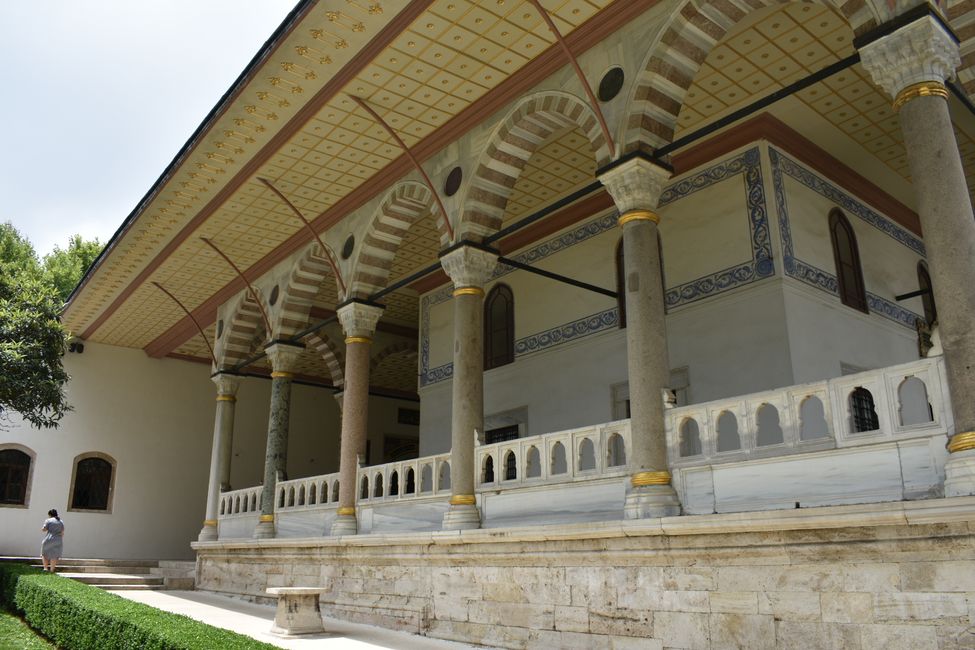
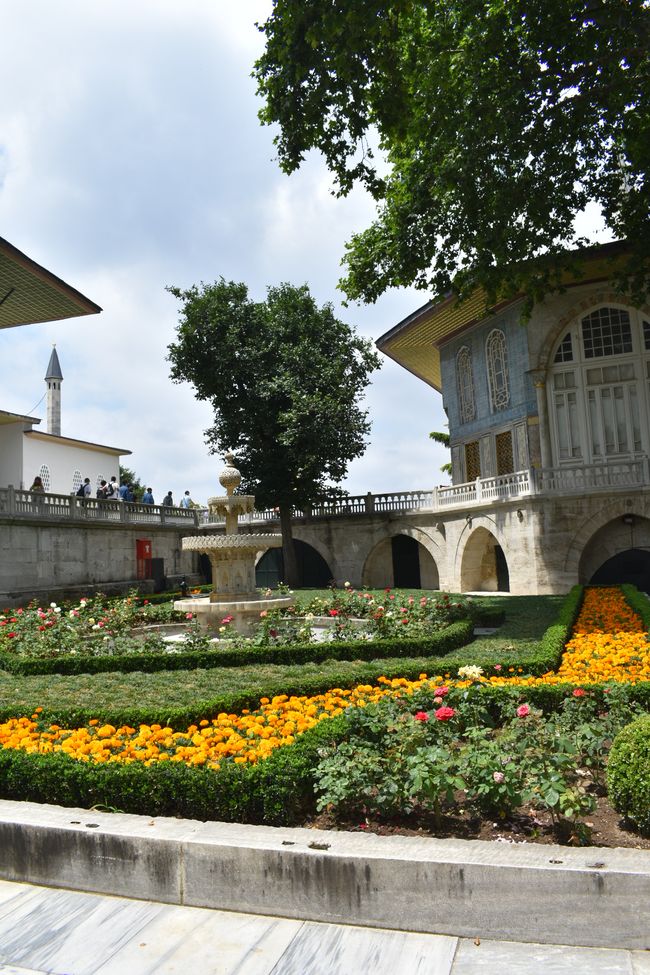
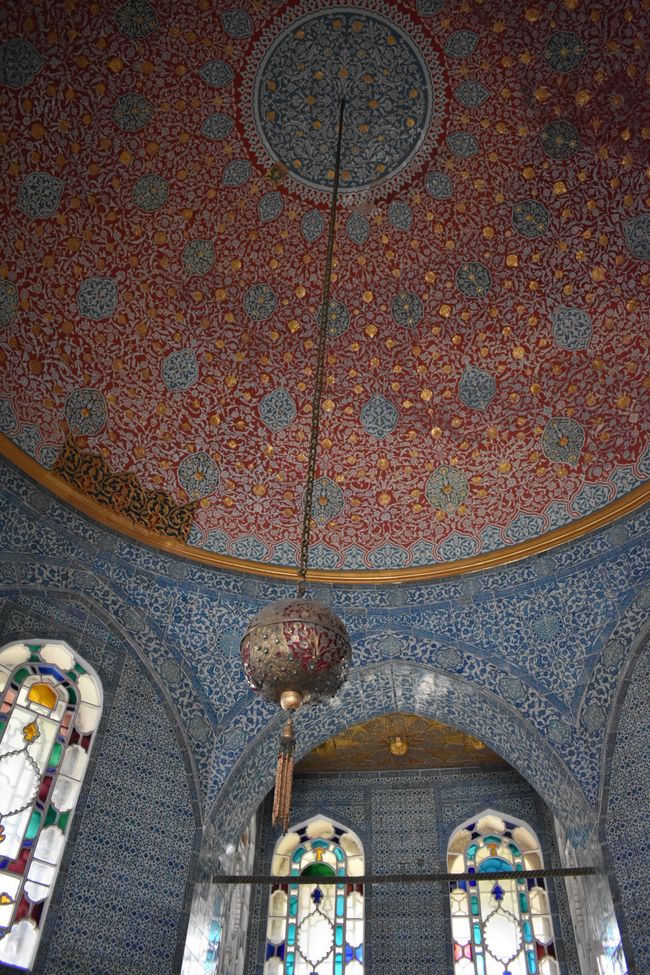
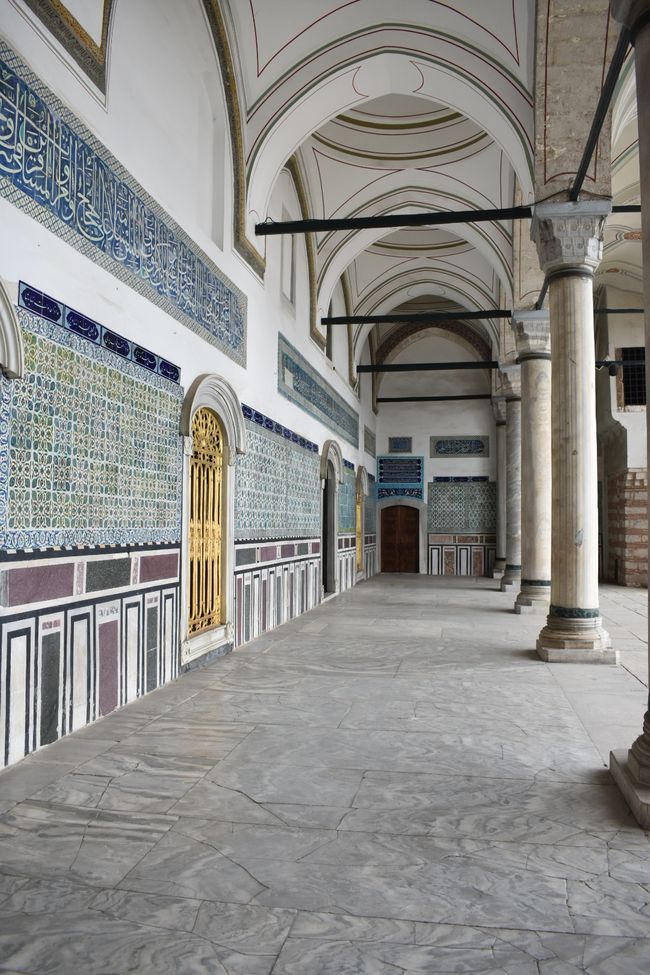
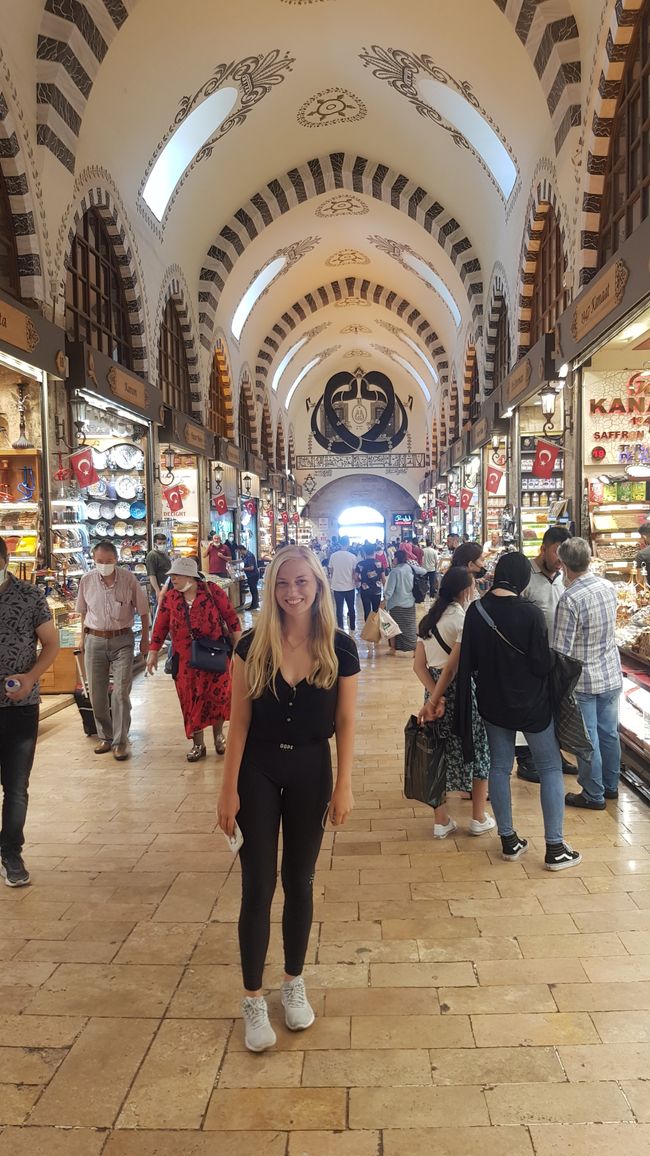
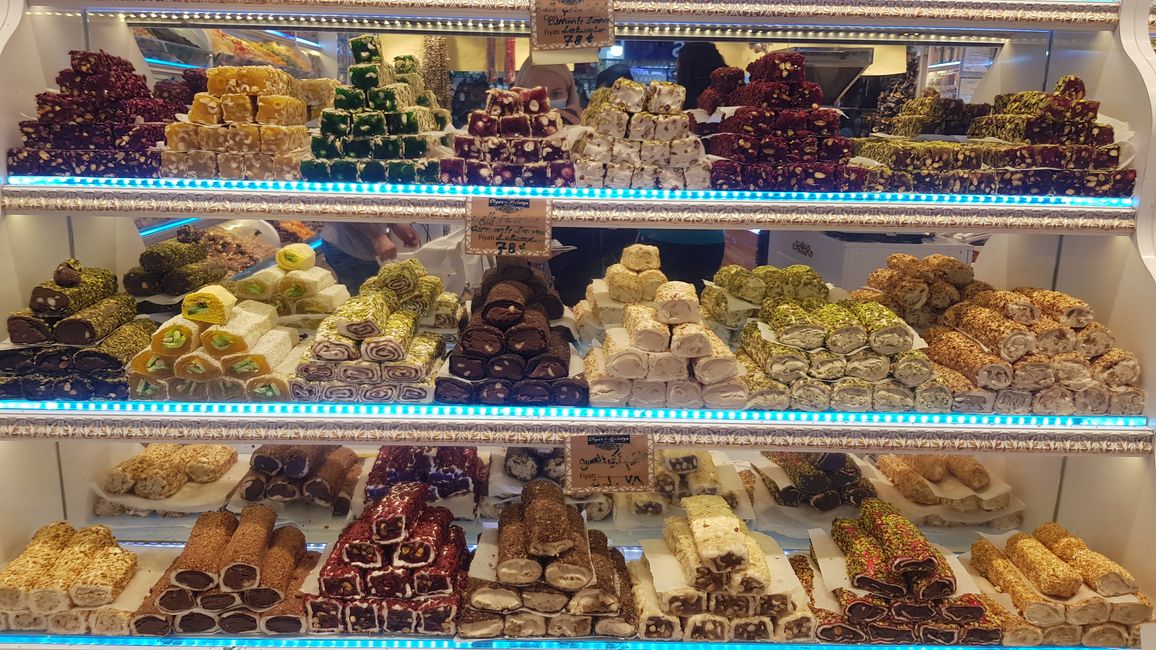
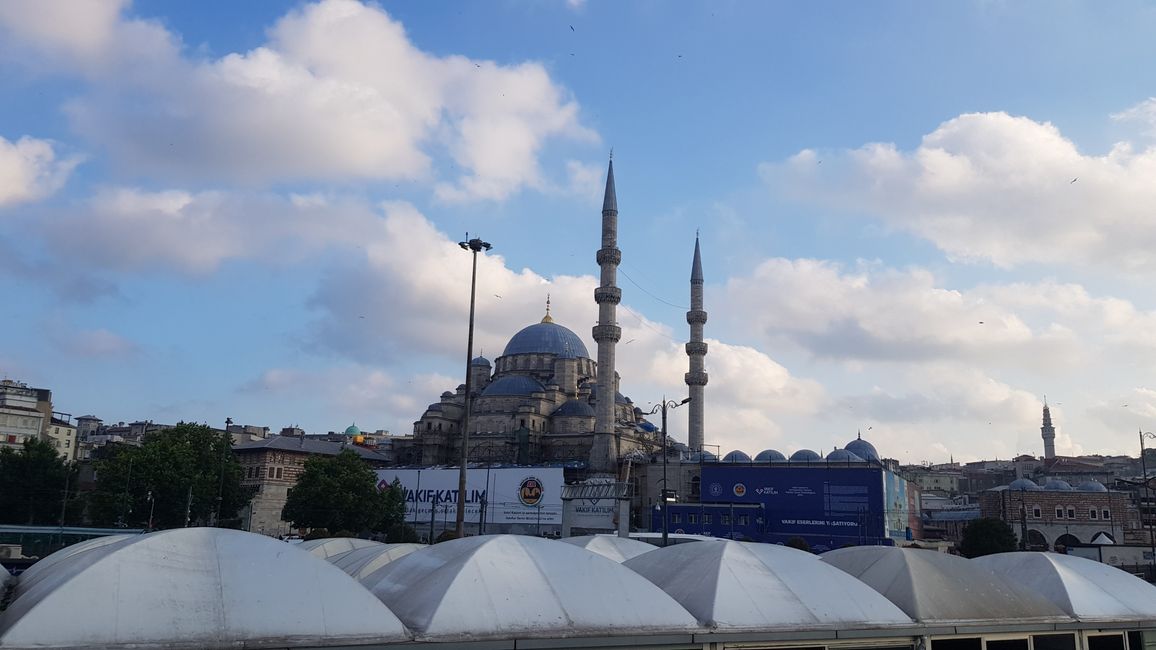
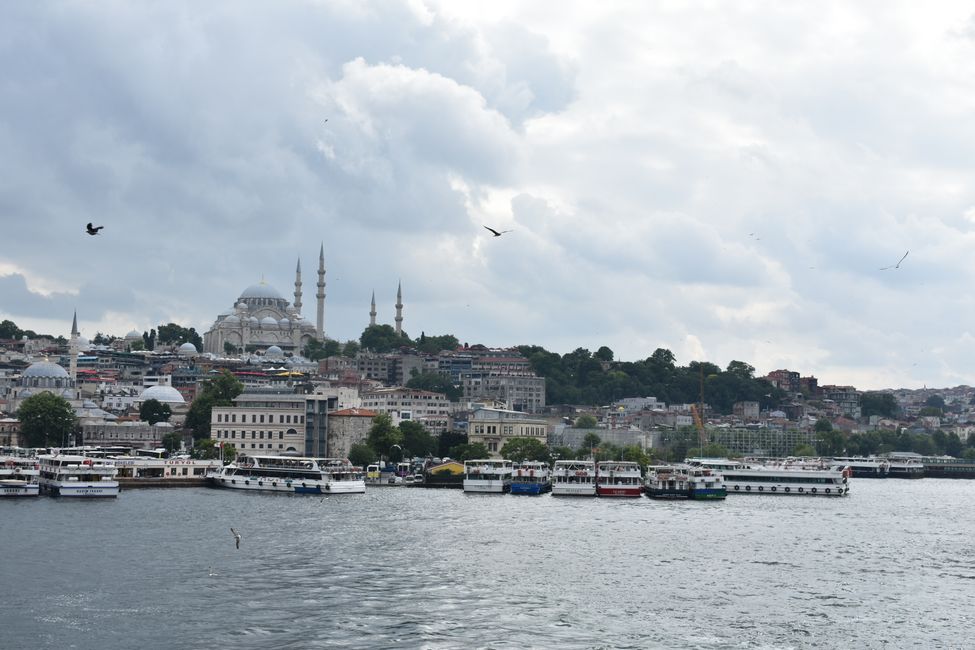
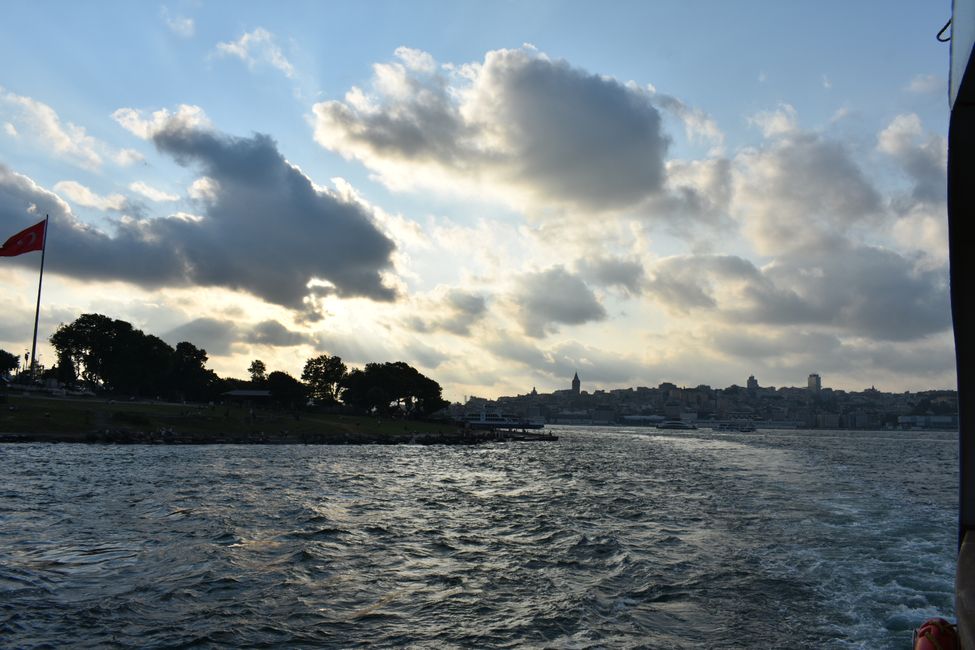
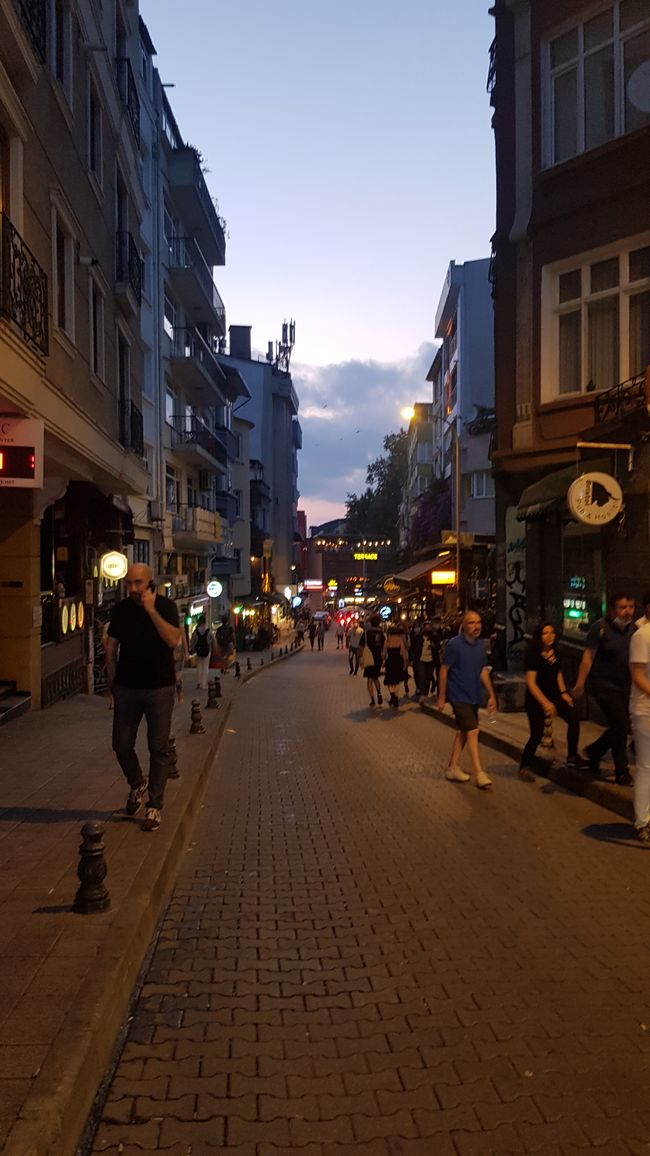
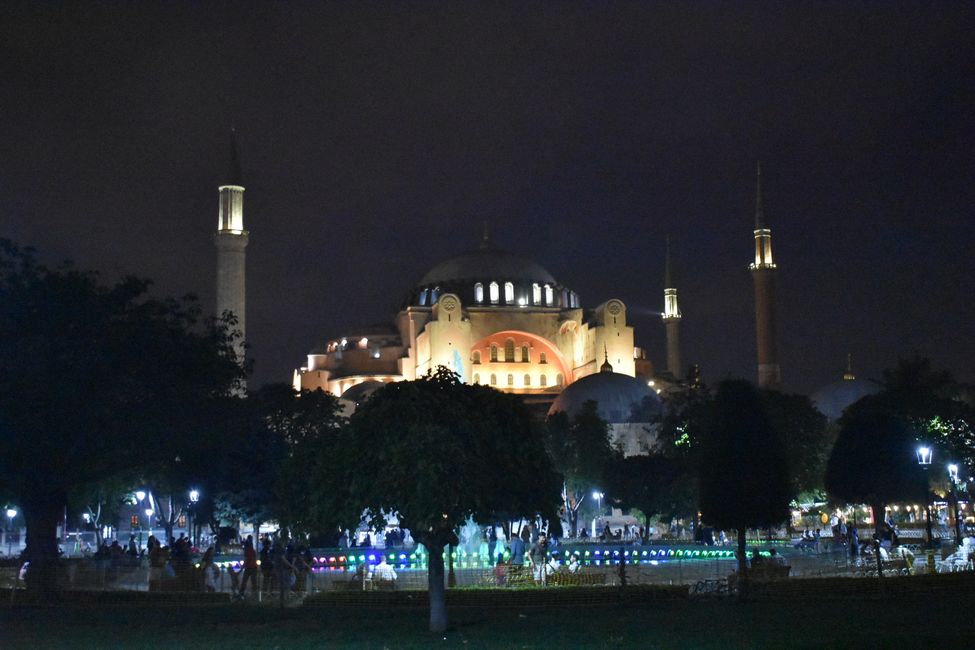
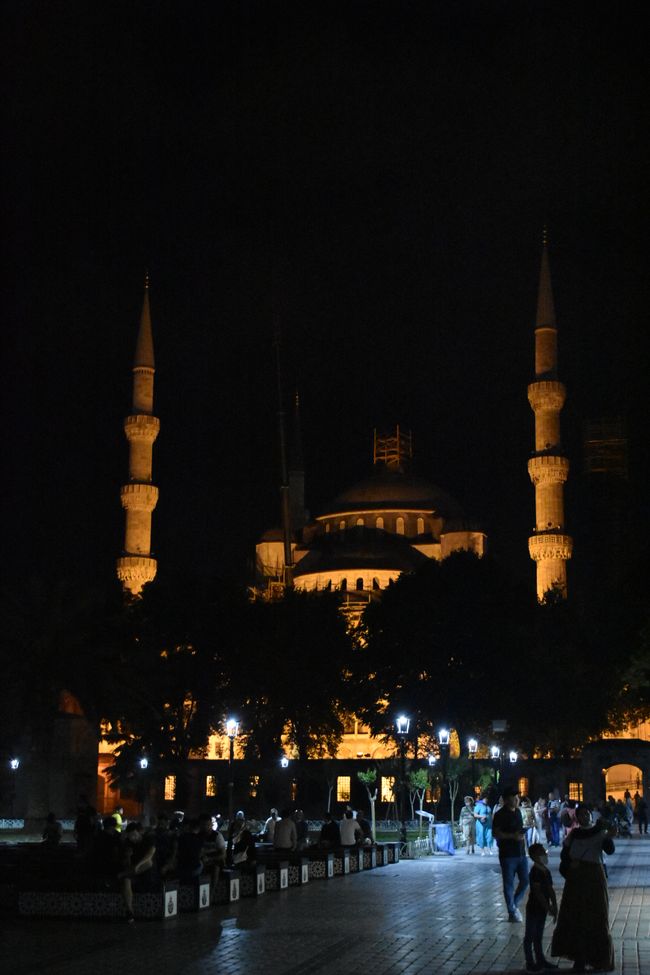
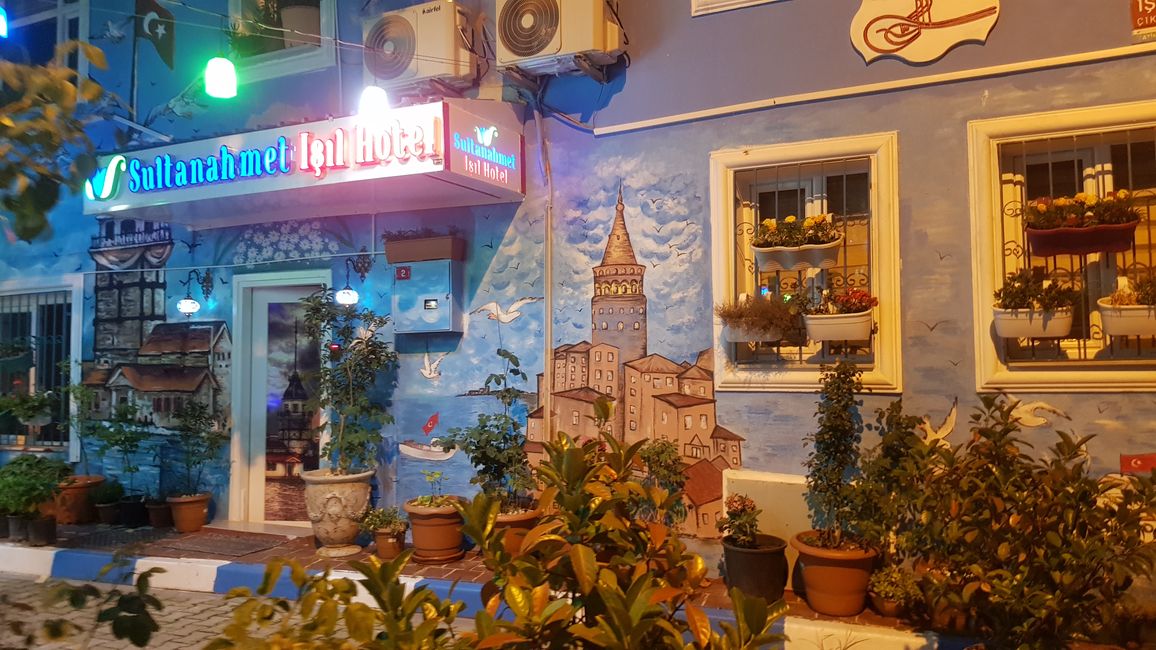
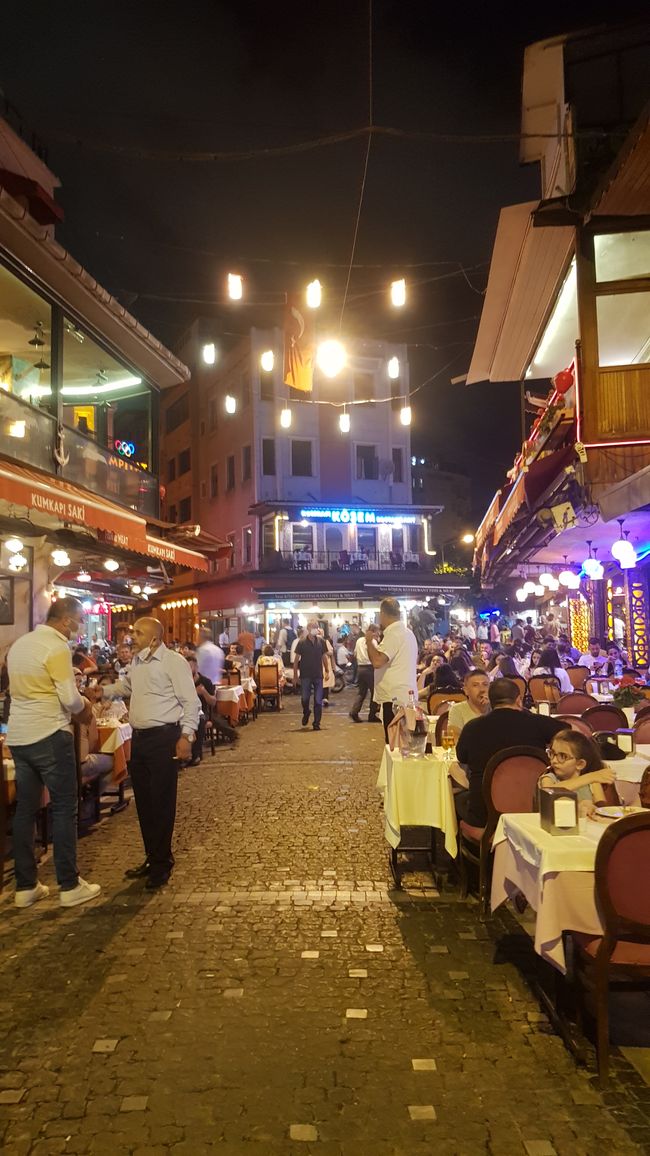
สมัครรับจดหมายข่าว
Well, who would have thought? Instead of the planned 10 countries, there were 11 and even a whole new continent added!
The journey was surprisingly fast and uncomplicated. We had to go through customs with all our belongings at 3 am, and we actually had to show our vaccination passports, but it was all done in about an hour. Around 6 am, we arrived at the large international bus station in Istanbul and were swarmed with taxi offers. Since we didn't have an Istanbul card yet, we had no choice but to take a taxi for 80 lira to bring us to the hostel. We had to search for the hostel together with the taxi driver for quite a while because there was no sign outside. We called the owner, and he groggily took our luggage. Unfortunately, all the rooms were occupied, so we couldn't use the restroom and had to go out in the rain to search for breakfast and a restroom. Fortunately, our hostel was near a large square, where the German Fountain is located, among other things. Here, we had free Wi-Fi, and we could explore the city through a free walking tour. The tour started at 11 am, so we had about 4 hours left. We spent the time drinking Turkish tea, eating simit, writing blog posts, and anxiously observing the weather. Just in time at 10:45 am, the rain stopped, and we could start the tour relatively dry. Once again, we were lucky that someone else booked the tour, otherwise it wouldn't have taken place. This time there were four of us, and we started at the German Fountain, where the guide told us about the 'German-Turkish friendship'. He referred to World War I, in which Turkey was allied with Germany. He immediately added that they weren't so foolish anymore in World War II and remained neutral. Mustafa Kemal Atatürk holds a special place in Turkey's history. After organizing and leading political and military resistance against the plans of the victorious powers after World War I, he declared the republic on October 29, 1923. During his tenure, he implemented profound reforms in the political and social system, aiming to transform Turkey into a modern, secular, and European-oriented state (principles of Kemalism). Among other things, the sultanate and Sharia law were abolished, and coeducation was introduced, although gender equality remains an issue to this day. Legal systems were adopted from various European countries. However, since the Islamist Adalet ve Kalkınma Partisi (AKP) took power in 2002, there has been a re-Islamization and a decline in Kemalism.
After this brief historical introduction, we headed to Hagia Sophia. It looked very impressive from afar. This was the first time we had to cover our heads. It was quite crowded. In the entrance area, the guide drew our attention to the depiction of Mary and Jesus with Emperor Justinian and Emperor Constantine on the walls. Before entering the main room, we had to take off our shoes. Walking barefoot with a headscarf in this huge hall made us feel quite small. We were impressed. We made ourselves comfortable on the carpet, and our guide told us more about the history and structure of Hagia Sophia. First, he made it clear that for cautionary reasons, he wouldn't mention the name of the president, but instead, we would use the synonym 'tall man'. This way, we could be a little critical. In line with this, he explained to us that since last year, Hagia Sophia has become a mosque again. This was primarily for political reasons, as support from the urban population for Erdogan had significantly declined. It was built as a Byzantine church in Constantinople between 532 and 537 AD. Later, during the Ottoman Empire, about 1,000 years later, it was used as a mosque. Afterwards, Atatürk proposed in 1934 to transform it into a museum. The walls are adorned with colorful ornaments, and at the top of the sides, the inscriptions of Allah, Mohammed, and two of his nephews are visible on round panels (clearly added hastily), and the chandeliers hang very close to the head. There is an elevated balcony that looks like a golden cage, where the sultan could visit the mosque, protected from the crowd. Another characteristic is a small tower from which the imam makes his sermons on Fridays. We were supposed to admire the features of a mosque in the Blue Mosque, but unfortunately, it is currently a major construction site, so we will visit the Nuruosmaniye Mosque instead. On the way there, we still need to find the hostel of one of our companions - it seems they have more problems here. We were recommended to try the Testi Kebab, an Anatolian specialty where meat and vegetables (or just vegetables) are cooked in a clay pot over a fire. We definitely have to try it. Once we arrived in Nuruosmaniye, our guide emphasized the importance of talking about Islam. He gives us another basic introduction to the five pillars of Islam and the structure of a mosque. An important statement from the Quran for him is that before God, all people are equal (including imams and politicians). He regrets that few people actually know and interpret the Quran for themselves, as it is essential for individual belief. In reality, families have a strong influence, as does politics, including imams used for propaganda. Even in his own family (parents and in-laws), they avoid the topic of faith and religion because opinions and beliefs are too diverse.
We leave the mosque and enter the Grand Bazaar of Istanbul. It consists of a large hall with many corridors, where beautifully decorated lamps are displayed next to Turkish delight and jewelry. Traditional customs particularly stand out in jewelry: for example, a gold coin is given as a wedding gift, and on the occasion of an engagement, the woman receives special bracelets. However, this bazaar is very crowded with tourists and rarely or never used by locals. We especially liked the arched ceilings of the hall and the atmosphere. At the end of the tour, the guide takes us to the courtyard of a former school, where people now mainly smoke shisha and drink tea or coffee. Due to the rain, we decide to try Turkish coffee with pistachio and chat with the other two from the tour. The coffee is about the size of an espresso, quite sweet, with a slight nutty taste, and consists of layers of coffee foam, coffee, and coffee grounds. It was worth a try, but we didn't have it again.
After officially checking in at the hotel, we set out to find an ATM to get the Istanbul Card. Actually, we had already thought of it correctly, but we didn't dare. Fortunately, there is so much going on in Istanbul that you can always find someone who is happy to help. Then we decided to treat ourselves to something special: after the rain and lack of sleep, we went to the Hamam-Treatment in Cagaloglu, the oldest and probably most expensive bath in Istanbul (although we didn't have a choice due to the late hour). Hamam is a steam bath where the staff rubs, soaps, and massages you after a warming-up phase. Afterwards, our skin feels very soft, and we already know that we will sleep well. After that, we were served tea, a glass of sherbet, and two pieces of Turkish delight, which didn't completely satisfy our hunger. So, we went out to eat something delicious!
We definitely wanted to try the Testi Kebab! Before that, we shared a meze platter with incredibly delicious spreads and olives. The Testi Kebab is brought in a burning clay pot and broken open. The vegetables taste fantastic, and it comes with rice and fries. We both realize that we have underestimated vegan Turkish cuisine - fantastic!!! The restaurant owner is very happy about our visit, so he entertains us continuously and even treats us to vodka and honeydew melon. We are incredibly full and wonder how we will manage to get home. We pass Hagia Sophia and the Blue Mosque again, which are now brightly illuminated. The city is still very lively, but we collapse into bed and sleep quite well until the next morning.
Before our bus leaves for Sofia at midnight, we want to accomplish a lot: visit a sultan's palace, see the Suleymaniye Mosque, take a Bosphorus boat tour, visit the Spice Market, eat Turkish ice cream, go shopping, cross over to the Asian side of the city... definitely too much for just one day. We decide to start with Topkapi Palace, even though the entrance fee at the gate is higher than expected. We think that 20€ is too much - well, now we're already here. We receive an audio guide that accompanies us through the parks, rooms, and exhibitions. The complex is impressive and extensive, and it was inhabited by the sultans and their families for several centuries. It was the administrative center of the Ottoman Empire. Up to 5,000 residents lived there on more than 69 hectares. Unfortunately, there is an additional fee for the harem, so we only listen to the audio guide traces about it. It also sounds incredibly interesting - well, maybe next time. We particularly like the pavilions in the final courtyard because they are adorned with beautiful colorful mosaics both inside and outside. The exhibitions of the dishes and kitchen tools (especially their size) are interesting too. We actually spend over 3 hours on the palace grounds - and then we need a cookie. We actually wanted to continue to the Suleymaniye Mosque, but we come across the Spice Market - and end up staying there for a while. We are particularly fascinated by the brightly decorated, handmade plates and bowls. Each one has to be discovered individually. Maybe we also spent some money there. It's already 4 pm, and we walk to the Galata Bridge, where you can take boats for a Bosphorus tour. Tickets on site only cost 25 lira (so don't let them sell you something else beforehand!). There is still about 45 minutes until the next boat, so quickly up to the Suleymaniye Mosque! Non-existent pedestrian traffic lights hold us back the most, but we manage to get upstairs in a good time. From there, we have a beautiful view of the city, the Bosphorus, and the Golden Horn. This mosque is also huge and has a beautiful large courtyard. The interior is brighter than in Hagia Sophia, although we are only allowed to enter the prayer room. Otherwise, we recognize many elements that were explained to us in other mosques. We hurry back to the boats near the Galata Bridge - but then nothing comes of it because we don't have enough Turkish lira again. Oops. Therefore, we decide to walk across the bridge, passing many fish restaurants, and arrive in Karakoy. We want to go to Taksim because it is said to be the best place to see locals shopping. Fortunately, we receive help again: we should take the metro and go one stop. Strangely enough, the metro only goes one stop anyway and is more like a funicular railway that goes steeply uphill. Confused, we get off again but find ourselves in a very busy pedestrian zone with shops lined up one after the other. We come to a very popular shopping center with low ceilings and narrow corridors, which also reminds us of a market or bazaar. When entering, we have to register with our Hess-Code (which is also needed for the Istanbul Card and for any shopping center or similar... In Turkey, the government knows where you are...). Our temperature is also measured on our hand. It's not easy to not get lost in this shopping center. There are just too many different winding corridors, and there are always stairs. We realize that we must be getting old because most clothes seem 'too young' for us. Haha, well, we still find a beautiful long dress and a jumpsuit, which we take with us and pay in Euros. Conveniently, we have also exchanged some money.
Since we still want to go to Kadikoy, we make our way back and take a ferry, which can also be used with the Istanbul card. Kadikoy was recommended to us by our free walking tour guide as the best place to find restaurants, bars, ice cream, and a great atmosphere. We walk through the noisy, crowded streets, where we can truly feel this spirit. In the small snack bar we choose, we get something incredibly delicious made from zucchini and mushrooms (we don't know exactly what it was, but it was good!) and a falafel wrap. The cuisine here is colorful and diverse, and we love it! Unfortunately, time is running out, and we have to take the subway back again to get our luggage in time, buy simit, and get to the bus station. This turns out to be a little more difficult because the trams have already closed. Therefore, we have to walk for 35 minutes through the city to a train station, but at least we pass by great painted house facades and a Turkish party with lots of cheerfulness and music playing. The train to the bus station then costs about 50 cents. Finally, when we arrive at the bus station, it's incredibly crowded again. Most people want to leave the city and go to the beach. Many of them also get on the bus with us heading towards Bulgaria. This time, crossing the border from 3 am to 5 am is more complicated, or simply more time-consuming.
We are incredibly grateful that the bus to Skopje only left on Thursday and that we got THIS chance.
Istanbul was an incredibly beautiful, diverse, and colorful experience that we can't even remotely do justice to with this blog entry. You probably have to experience it yourself.
สมัครรับจดหมายข่าว
คำตอบ
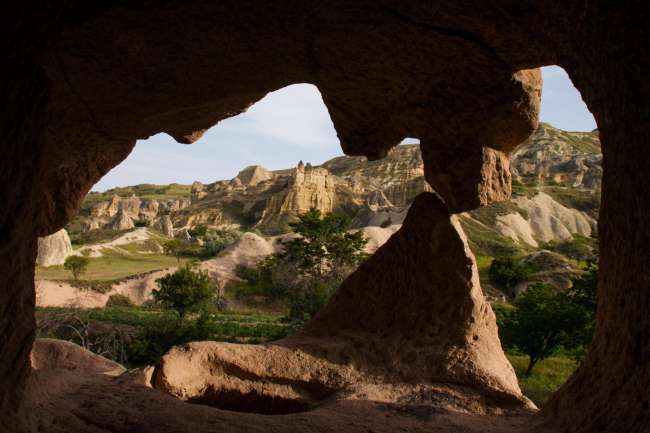
รายงานการเดินทาง ไก่งวง
